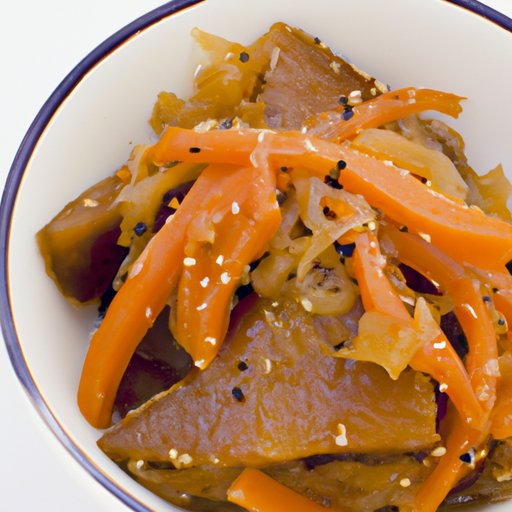
I. Introduction
If you’re new to the world of gluten-free cooking, it’s easy to become confused about which ingredients are safe to use. Mirin, a sweet rice wine from Japan, is a popular ingredient in many recipes, but is it gluten-free? In this article, we’ll explore the world of gluten-free mirin, from its ingredients to its uses to its potential drawbacks. Whether you’re a seasoned chef or a beginner in the kitchen, you’ll find plenty of useful information on how to incorporate gluten-free mirin into your cooking.
II. The Complete Guide to Mirin and Its Gluten-Free Status: What You Need to Know
Mirin is a Japanese rice wine that is similar to sake but has a lower alcohol content and a higher sugar content. It is commonly used in Japanese cooking to add sweetness and depth of flavor to dishes. The traditional method of making mirin involves fermenting glutinous rice, koji, and shochu. However, some modern mirin is made with added sugars, corn syrup, or other sweeteners.
The good news for those who are gluten-free is that most mirin is gluten-free. Since mirin is made from rice and not wheat, the base alcohol is gluten-free. However, some brands of mirin may contain additives or additional ingredients that could contain gluten. When shopping for mirin, make sure to carefully read the label and look for any potential allergens.
III. Gluten-Free Cooking with Mirin: Tips, Tricks, and Recipes
If you’re looking to incorporate gluten-free mirin into your cooking, there are plenty of ways to do so. One of the easiest ways to use mirin is as a marinade or glaze for meat, fish, or vegetables. Simply mix mirin with soy sauce and other seasonings, then marinate your protein or vegetable of choice for an hour before cooking. Or, you can use mirin to add sweetness and depth of flavor to soups, stews, and stir-fries.
Here are a few tasty gluten-free recipes that use mirin:
- Gluten-Free Teriyaki Chicken
- Shrimp and Broccoli Stir-Fry with Mirin Sauce
- Gluten-Free Rice Noodle Salad with Mirin Vinaigrette
IV. Unpacking the Gluten-Free Mirin Debate: Why Some Mirin Brands are Safer Than Others
While most mirin is gluten-free, some brands may contain trace amounts of gluten due to cross-contamination or added ingredients. To ensure that your mirin is truly gluten-free, look for brands that are certified gluten-free or that specify on the label that they are free from gluten and other allergens. Additionally, you can contact the manufacturer directly to ask about their gluten-free policies and practices.
V. The Benefits and Drawbacks of Using Gluten-Free Mirin in Your Cooking
There are several benefits to using gluten-free mirin in your cooking, such as adding depth of flavor and sweetness to dishes without the need for added sugar. Additionally, mirin is a good source of antioxidants and polyphenols, which may offer some health benefits.
However, there are also some potential drawbacks to using gluten-free mirin, such as its high sugar content. If you’re watching your sugar intake, keep in mind that even small amounts of mirin can add up quickly. Additionally, some people may be allergic or sensitive to the other ingredients in mirin besides alcohol and sugar.
VI. A Beginner’s Guide to Cooking with Mirin: Gluten-Free Edition
If you’re new to cooking with mirin, it can be helpful to know a few tips and tricks for getting started. First, start with small amounts of mirin and gradually increase as needed to avoid overpowering your dish. Additionally, try swapping out mirin for other sweeteners, such as honey or maple syrup, if you don’t have any on hand. Finally, experiment with different types of mirin to find the brand and flavor that you like best.
For those who are new to gluten-free cooking, it’s important to keep in mind that there are plenty of gluten-free alternatives to common ingredients, including mirin. For example, you can substitute apple cider vinegar or rice vinegar for mirin in some recipes.
VII. Conclusion
Mirin is a versatile ingredient that can add sweetness and depth of flavor to a wide range of dishes. While most mirin is gluten-free, it’s important to read labels and choose brands that are certified gluten-free or that specify on the label that they are free from gluten and other allergens. With a little creativity and a few tips and tricks, you can easily incorporate gluten-free mirin into your cooking and enjoy all of its delicious flavor benefits.





